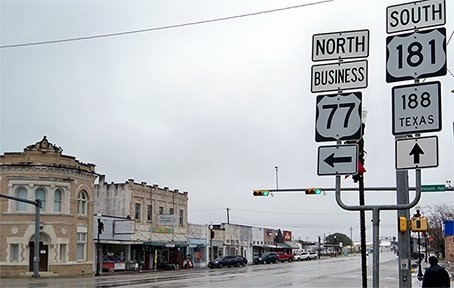End of US highway 77 (original) (raw)
 Summa Summa |
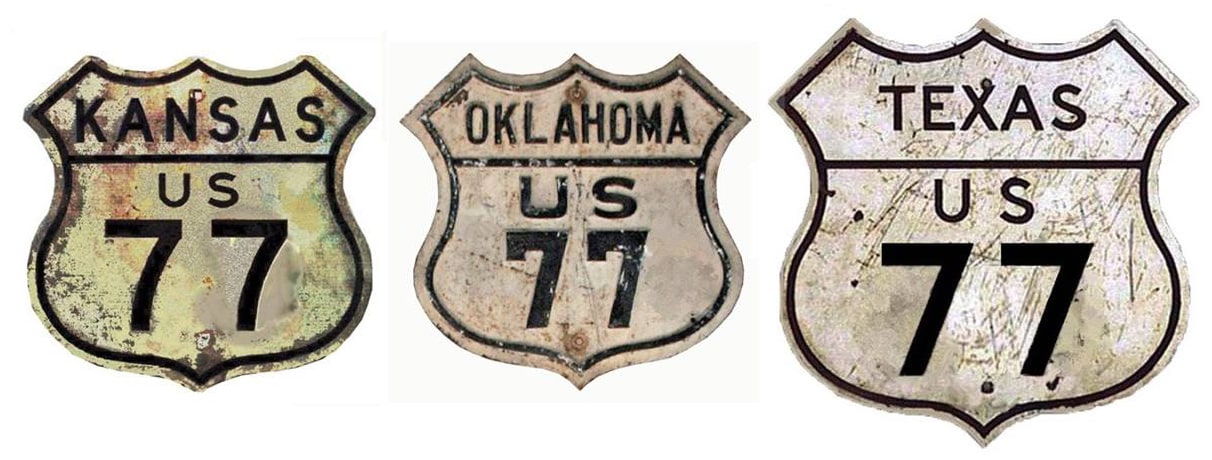 Summa Summa |
|---|
Mileage: in 1989 AASHTO listed a figure of 1399 miles for US 77... however, that included the mileage of US 77's associated business/bypass/alternate routes. According to the state subtotals on AASHTO's 1989 spreadsheet, mainline US 77's actual end-to-end total at the time was 1305 miles. That closely matches our own 2020 measurement, which yielded 1303.0 miles (reroutings and realignments likely explain the difference). Historically, when US 77 went to Ortonville, it was 1530.6 miles long.
| US 77 was an original route, commissioned in 1926. At the time its south end was in Dallas. The original north end of US 77 was in South Sioux City NE (just across the river from its current endpoint in Sioux City IA). | | | -------------------------------------------------------------------------------------------------------------------------------------------------------------------------------------------------------------------------------------------------------------------- | |
| The view in this interactive image is south on Main. Originally eastbound US 12 traffic turned left here at Railway, while straight ahead on Main was the north beginning of US 77: | | | ----------------------------------------------------------------------------------------------------------------------------------------------------------------------------------- | |
This last segment of the road was likely realigned when the new US 12 was built to the right. The original US 12-77 probably curved slightly to the east and met US 75 just to the right of this intersection (right about where MN 7 splits off to the south today). US 77 would have ended there at a fairly straightforward four-way junction with US 75. US 12 would have continued straight through this intersection (as opposed to having a jog, like it does today where it multiplexes with MN 7), and then continued east along Oak Avenue.
There we are looking eastbound on US 12 at its junction with MN 7 (old US 75); US 12 continues to the right with MN 7. After one block, the mainline (US 12) veers left, continuing eastward again, while southeastbound MN 7 is a right turn. If a driver were to turn right before they reached that next junction (heading west, across the railroad), they would be on the original US 12... and probably also on a historic north beginning of US 77.
Today SD hwy. 15 runs both ways along Dakota, but during the late '60s and '70s, US 77 began to the right on Dakota. At their Oct. 1981 meeting, AASHTO approved the truncation of the north end of US 77 to its current terminus in Sioux City. (Actually, the language of their approval shows that it was truncated to the Iowa-Nebraska state line, but Iowa DoT considers US 77 to extend just north of there, to its junction with I-29.)
These photos show the last northbound reassurance marker; US 77 ends on the far side of the bridge visible in the background: 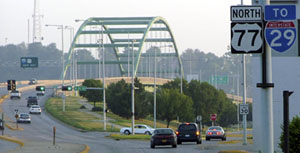 Sanderson, Aug. 2005 Sanderson, Aug. 2005 |
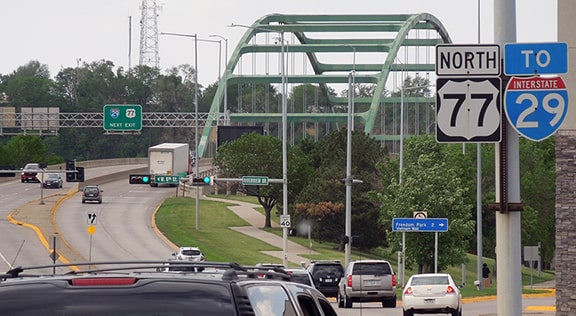 Sanderson, Jun. 2022 Sanderson, Jun. 2022 |
|---|
Sanderson, Jun. 2022
Ahead is also Business US 20, as indicated on the trailblazer just ahead, and then US 77 crosses the Missouri and enters Nebraska: 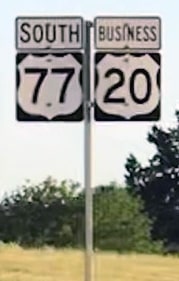 Sanderson, Jun. 2022 Sanderson, Jun. 2022 |
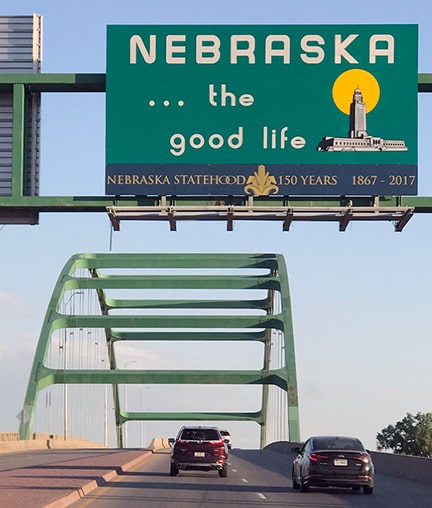 Sanderson, Jun. 2022 Sanderson, Jun. 2022 |
|---|
Just south of the bridge, the two routes split, with Business 20 continuing ahead on Dakota Avenue and US 77 turning west on 9th Street: 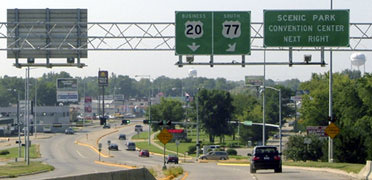 Sanderson, Aug. 2005 Sanderson, Aug. 2005 |
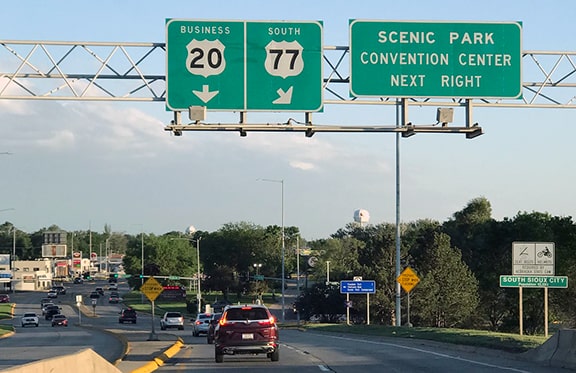 Sanderson, Jun. 2022 Sanderson, Jun. 2022 |
|---|
| Upon making that turn, one encounters the first standalone southbound confirming marker: |  Sanderson, Aug. 2005 Sanderson, Aug. 2005 |
For more detailed information about this terminus -- and to view many more photos (including some taken from both directions on I-29) -- please view Jeff Morrison's page. |
|---|
And finally, here are some photos showing the north beginning of US 77 as seen from both directions of I-29 (two from southbound, and then two from northbound):
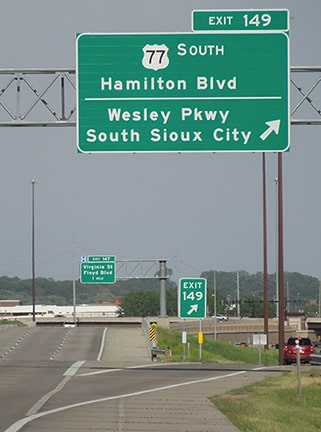 Sanderson, Jun. 2022 Sanderson, Jun. 2022 |
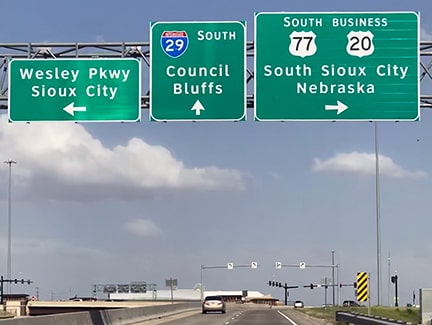 Sanderson, Jun. 2022 Sanderson, Jun. 2022 |
|---|
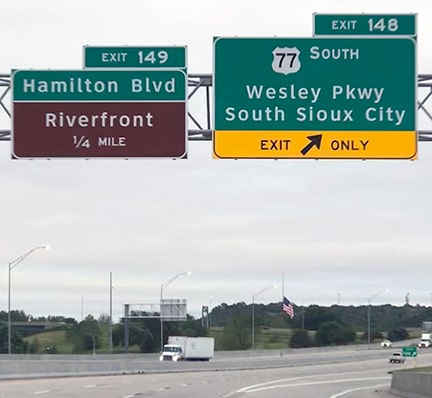 Sanderson, Jun. 2022 Sanderson, Jun. 2022 |
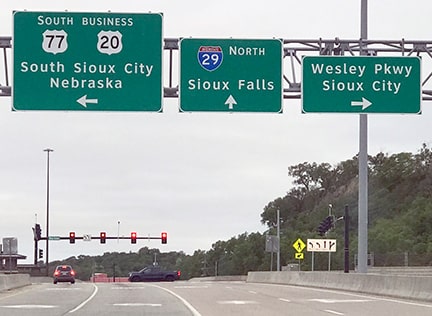 Sanderson, Jun. 2022 Sanderson, Jun. 2022 |
|---|
Today Sinton carries both US 181 and Business 77, which continues to the left on Vineyard Avenue. For a brief time the south beginning of US 77 may have been to the left, but it was not long before the US 77 designation was co-signed with US 181 into Corpus Christi. In 1945 the US 77 designation was removed from the segment between Sinton and Corpus; instead the route followed its current corridor through Kingsville and all the way down to Mexico at Brownsville.
Research and/or photo credits: Jake Bear; Monte Castleman; Jason Hancock; Karin and Martin Karner; Bob Otterson; Dale Sanderson; Michael Summa; Mike Wiley
Page originally created 2000; last updated Dec. 21, 2023.

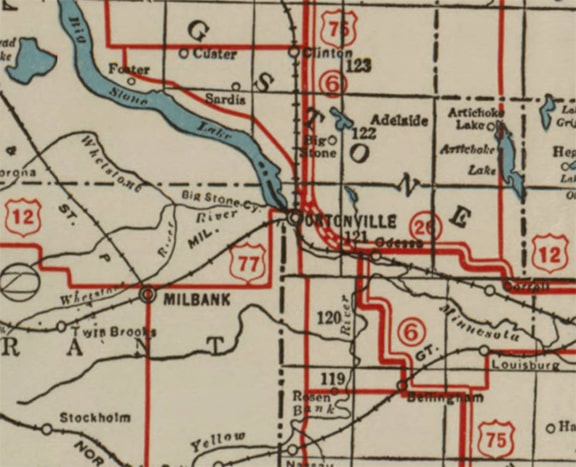
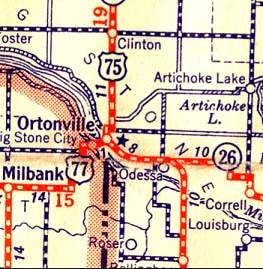
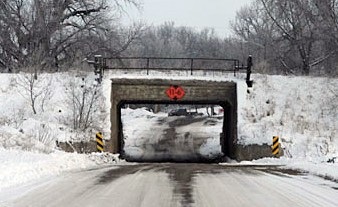
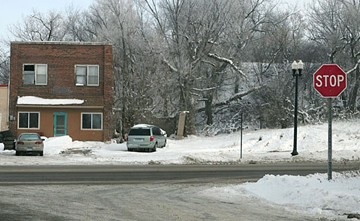
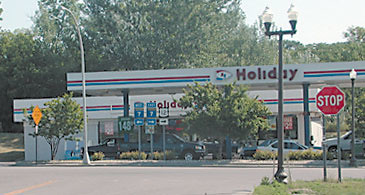
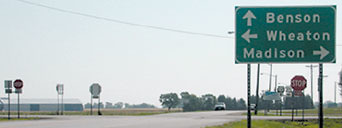
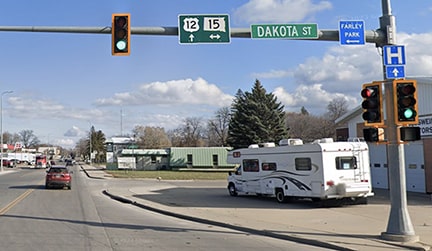
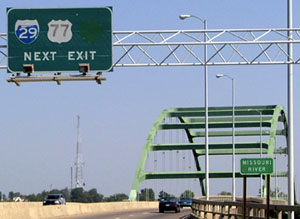
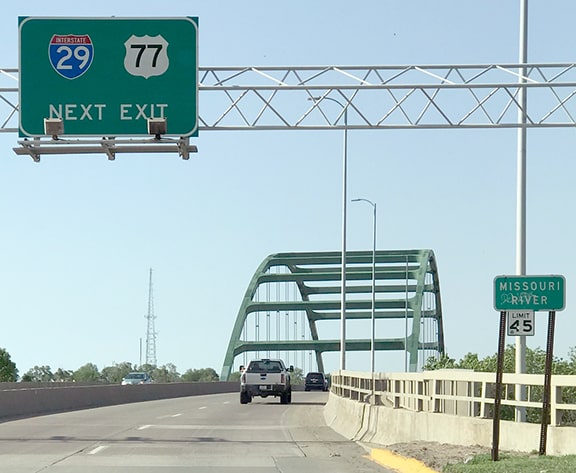
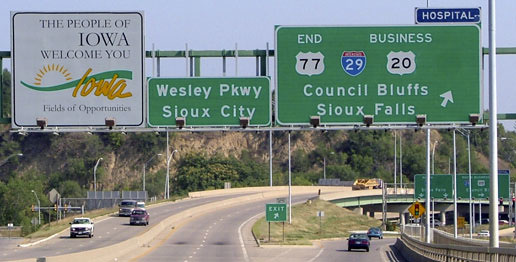
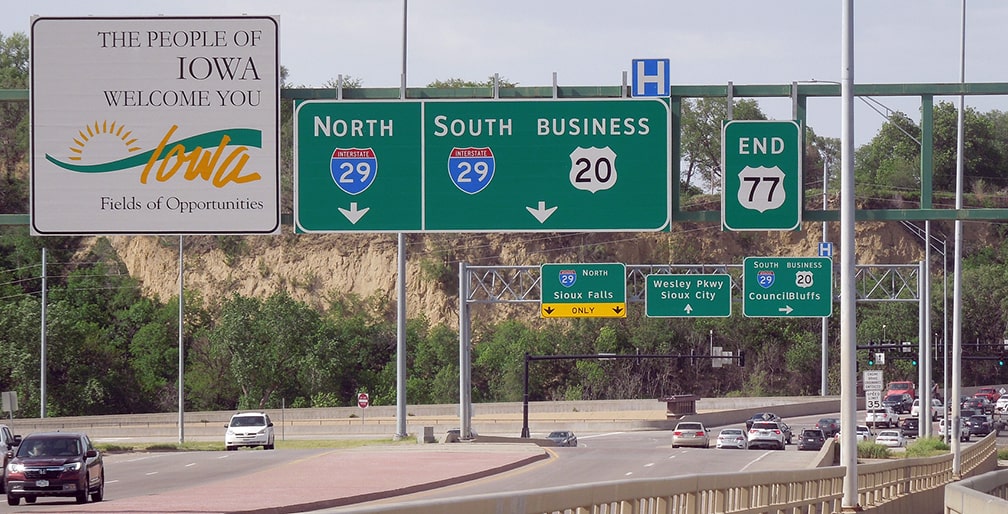
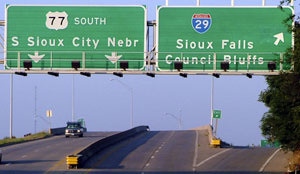
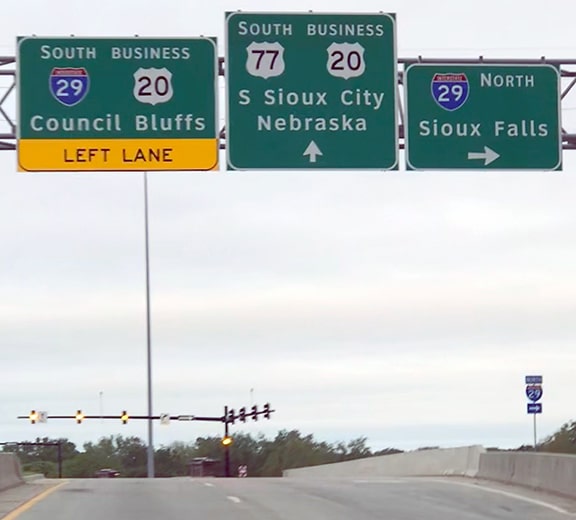 Sanderson, Jun. 2022
Sanderson, Jun. 2022